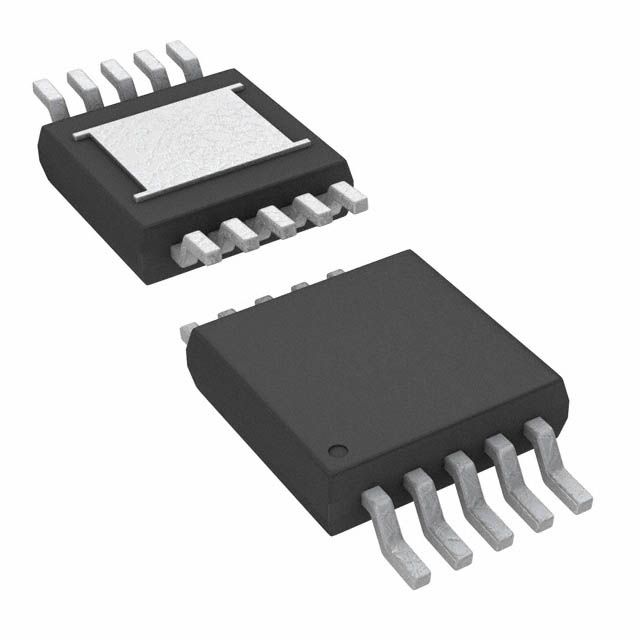RSK33N10KF30K1D325 Product Introduction:
Vishay Sfernice Part Number RSK33N10KF30K1D325(Resistor Networks, Arrays), developed and manufactured by Vishay Sfernice, distributed globally by Jinftry. We distribute various electronic components from world-renowned brands and provide one-stop services, making us a trusted global electronic component distributor.
RSK33N10KF30K1D325 is one of the part numbers distributed by Jinftry, and you can learn about its specifications/configurations, package/case, Datasheet, and other information here. Electronic components are affected by supply and demand, and prices fluctuate frequently. If you have a demand, please do not hesitate to send us an RFQ or email us immediately sales@jinftry.com Please inquire about the real-time unit price, Data Code, Lead time, payment terms, and any other information you would like to know. We will do our best to provide you with a quotation and reply as soon as possible.
Resistor Networks and Arrays are the basic components of electronic circuits, which combine multiple resistors through a specific arrangement and connection mode to form a circuit structure with a specific function. In simple terms, the resistor network refers to a circuit that is connected by a number of resistors according to a certain law, and the resistor array refers to that these resistors are arranged in the form of an array in order to achieve a specific circuit function more efficiently. The main function of resistor networks and arrays is to regulate, distribute and control the current and voltage in the circuit. Through reasonable design and layout, they can realize signal attenuation, voltage division, filtering and other functions, so as to improve the performance and stability of the circuit.
Application
The role of Resistor Networks and Arrays is particularly significant. In high performance self-return-to-zero programmable instrumentation amplifiers, resistance array circuit is the core part of high precision measurement. At the same time, in the design of electronic products, resistor networks are often used to adjust circuit parameters and protect components from overcurrent damage. Resistor network and array are also widely used in analog signal processing, digital signal processing, communication system and other fields, becoming the key technology to achieve high precision measurement and signal processing. In addition, with the rise of emerging technologies such as the Internet of Things and smart homes, resistor networks and arrays are increasingly widely used in sensor networks and signal processing modules.
FAQ about Resistor Networks, Arrays
-
1. What is a resistor array?
Array structure composed of multiple resistors
Resistor array refers to a structure formed by combining multiple resistors in a certain arrangement. This structure is widely used in electronic circuits and is mainly used to realize specific circuit functions, such as voltage division, filtering, impedance matching, etc.
Basic composition and types of resistor arrays
Resistor arrays are usually composed of multiple resistors, which can be arranged in one or two dimensions. According to the arrangement method and application requirements, resistor arrays can be divided into the following types:
One-dimensional resistor array: resistors are arranged in a straight line or curve, which is suitable for occasions where linear distributed resistors are required.
Two-dimensional resistor array: resistors are arranged in a matrix form in a plane, which is suitable for occasions where complex distributed resistors are required.
Application of resistor arrays in electronic circuits
Resistor arrays have many applications in electronic circuits, mainly including:
Voltage divider: voltage division can be achieved through resistor arrays, which are often used for signal conditioning and voltage reference.
Filter: By combining resistor arrays with capacitors, low-pass, high-pass or band-pass filters can be formed for signal processing.
Impedance matching: In high-frequency circuits, resistor arrays are often used to achieve impedance matching to ensure smooth signal transmission.
Op amp feedback circuit: In operational amplifiers, resistor arrays are used to form feedback loops, which affect the performance of the amplifier.
-
2. How to reduce network resistance?
The main methods for reducing network resistance include the following:
Improving the power factor of users: By reducing the reactive power transmitted by the line, the network resistance can be effectively reduced. This can be achieved by installing a reactive power compensation device.
Adding a reactive power compensation device: By adding a reactive power compensation device, the network energy loss can be reduced, thereby reducing the network resistance.
Implement economic distribution of power in a closed network: By reasonably distributing power and avoiding local overload, network resistance can be reduced.
Appropriately improve the operation level of the power grid: By optimizing the operation mode of the power grid, the efficiency of the power grid can be improved, thereby reducing network resistance.
Organize the economic operation of transformers: Reasonably arrange the operation mode of transformers to avoid overload, which can effectively reduce network resistance.
Adjust the user's load curve: By adjusting the user's load curve to avoid overload during peak hours, network resistance can be reduced.
-
3. What is an array in a semiconductor?
The array in a semiconductor mainly refers to a memory cell array. The memory cell array is the core part of a semiconductor memory, which is composed of a large number of memory cells arranged in a certain pattern. Each memory cell can store one or more bits of data.
Structure and function of memory cell array
The memory cell array is a key component of semiconductor memory, which specifically includes the following parts:
Address decoder: translates the address signal into the selection signal of the corresponding memory cell, and cooperates with the read/write circuit to complete the read/write operation.
Read/write circuit: includes read amplifier and write circuit, used to complete read/write operation.
Control logic: determines the read/write operation of the chip.
 Lead free / RoHS Compliant
Lead free / RoHS Compliant




























